Carmakers are making more hybrid vehicles than ever. Here's who is dominating the market.
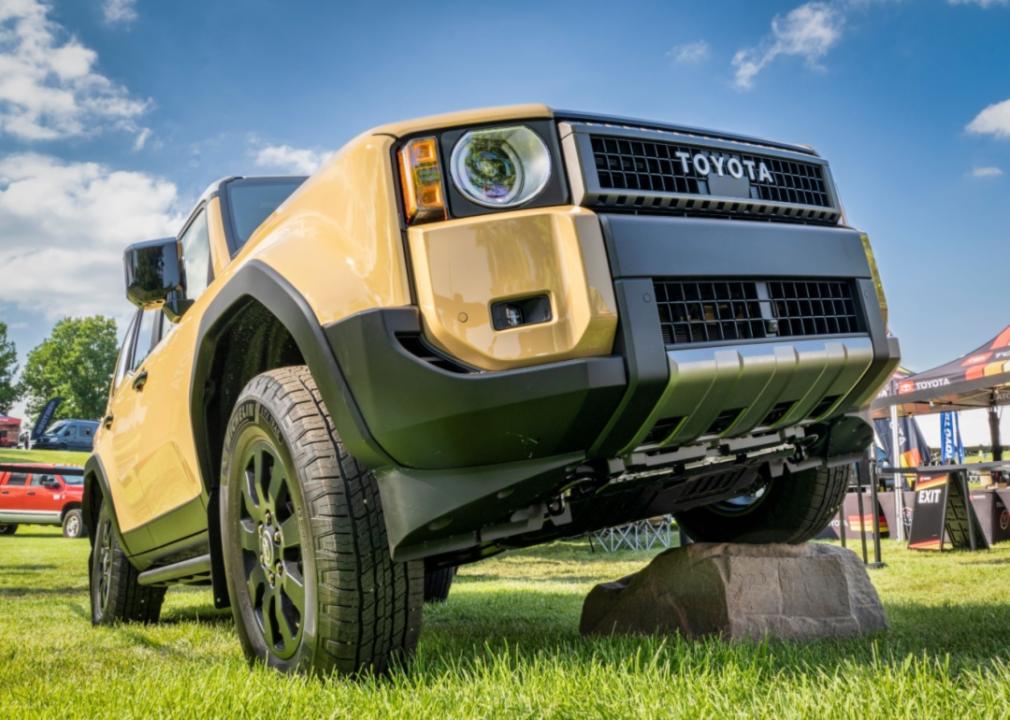
marekuliasz // Shutterstock
Carmakers are making more hybrid vehicles than ever. Here’s who is dominating the market.
A new hybrid Toyota Land Cruiser.
Demand for hybrid vehicles is surging, and carmakers are quickly shifting gears to stay relevant in the market.
In model year 2023, sales of hybrid vehicles hit a new high, comprising 13.6% of all production. The rise continued in 2024, with sales of gas-electric hybrid vehicles in the United States increasing five times faster than that of fully electric automobiles in February, according to financial services firm Morgan Stanley. Meanwhile, the demand for fully electric cars has cooled.
The General examined data collected from the Environmental Protection Agency to see which car manufacturers produced the most hybrid vehicles in 2023 and how their output changed over time.
As demand for gas-hybrid vehicles surges, manufacturers like Ford and Toyota and car manufacturer and supplier Schaeffler are expanding their production capacity. In 2023, 29% of Toyota’s sales were hybrid vehicles. The figure is expected to reach closer to 45% by the end of this year. Sales of the Jeep Wrangler plug-in hybrid increased from 37% of total Wrangler sales in the first half of 2023 to 50% in the second half of last year, according to Reuters.
Drivers are hot for hybrids in part because they strike a balance between their fully gas-powered and fully electric-powered counterparts. Drivers who prefer hybrid vehicles get the best of both worlds: the longer driving range of gas-powered vehicles and the fuel efficiency of electric vehicles.
Hybrid vehicles differ from purely electric vehicles in that they are powered by both fossil fuels and electricity, whereas purely electric vehicles rely on high-power battery packs to power the electric motors propelling the vehicle. Fuel-cell vehicles, on the other hand, are powered by hydrogen gas stored in tanks. The fuel cells in the vehicles convert hydrogen gas into electricity, leaving behind water vapor as emissions. Like regular EVs, they do not rely on gasoline or diesel.
The benefits of hybrids include better fuel economy than traditional gas-powered cars, thanks to their electric motors. And because drivers also have a longer driving range, they tend to have less anxiety about plugging in or staying in proximity to a charging station.
That said, there’s an environmental trade-off. While hybrids are more environmentally friendly than gas-powered vehicles, they emit significantly more emissions than fully electric vehicles, which produce zero emissions.
Both types of hybrid vehicles—hybrids and plug-in-hybrids—combine gasoline engines with electric motors. Hybrids use a small battery charged by the gas-powered engine itself, while plug-ins have larger batteries that need electric charging, but also allow for fully electric driving up to a point. Both types of hybrid vehicles revert to gas power once the electricity stored is depleted.
In the following analysis, companies are ranked by the percentage of their 2023 models that were hybrid cars. Also included is the share of electric vehicles and plug-in hybrids. Data is preliminary and based on data provided by automakers.
![]()
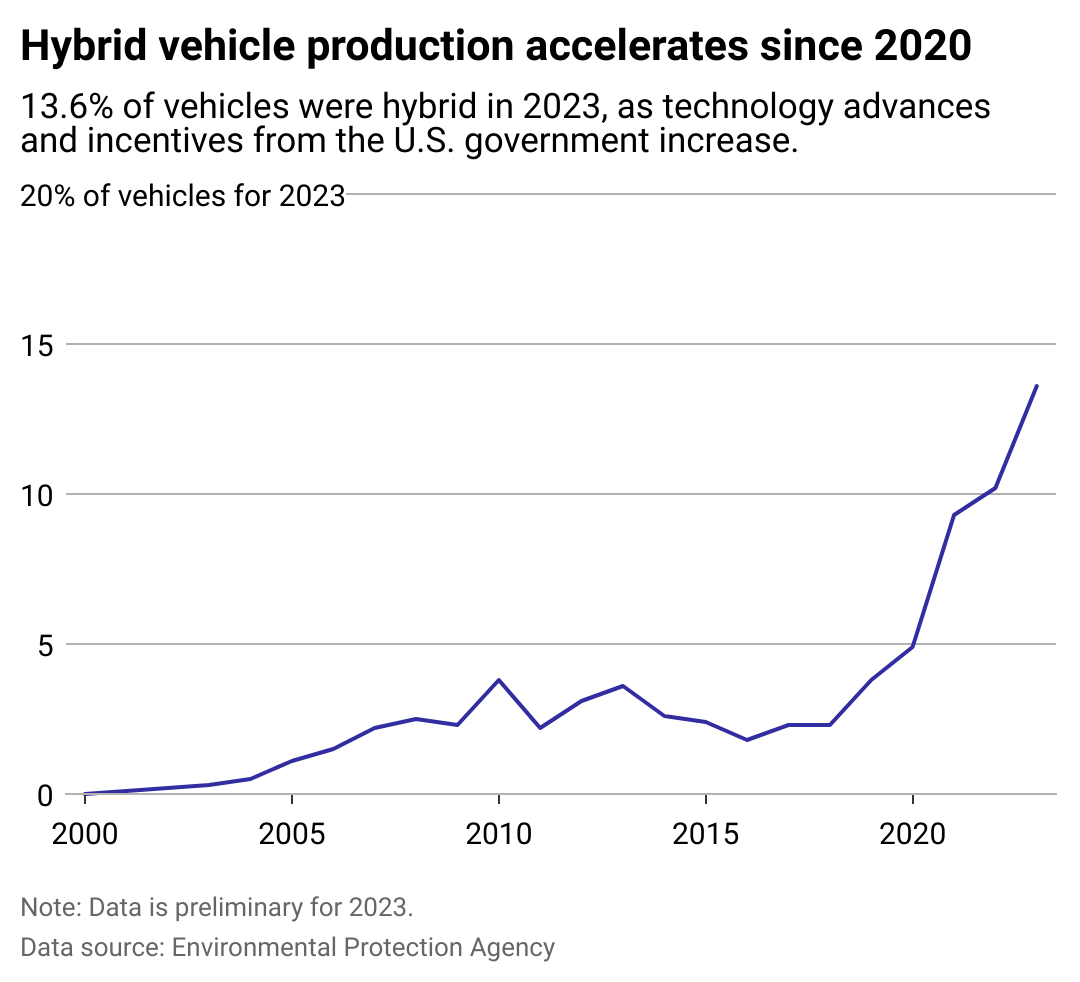
The General
How the hybrid vehicle market has grown
A line chart showing how hybrid vehicle production has accelerated since 2020.
Technological advancements, such as improved battery technology, power electronics, motor drives, and additive manufacturing, have enabled manufacturers to produce more hybrid vehicles.
These technological improvements coincide with the growth in demand for hybrid vehicles, which has been propelled by stricter emission standards, the falling price of electric batteries, rising fuel prices and concerns over fuel efficiency, and government incentives.
In March 2024, the EPA finalized rules that would ensure that electric vehicles comprise 56% of new passenger vehicles sold in the market from model years 2030 through 2032. The EPA expects light-duty vehicles to emit 85 grams of carbon dioxide per mile, almost 50% less than the standard for vehicles of model year 2026. CO2 emissions for medium-duty vehicles are expected to decrease by 44% on average under the new rules.
To incentivize drivers to switch to electric vehicles, the federal government also offers tax credits of up to $7,500 for the purchase of new plug-in electric vehicles and fuel-cell electric vehicles.
The hybrid electric vehicle market in the U.S. is expected to be worth over $55 billion by 2032, growing steadily since 2017, according to the market research firm Fact.MR. Passenger cars are the most commonly sold hybrid vehicles, with the Southwest being the biggest U.S. market segment, followed closely by the West Coast.
Hybrids are better suited for rural areas than purely electric vehicles because they are able to run on fossil fuels should electric power run out. This proves useful in areas with limited electric vehicle charging infrastructure, where drivers also need to make longer trips. Hybrids help mitigate some of the range anxiety that EV owners may have, particularly in remote areas.
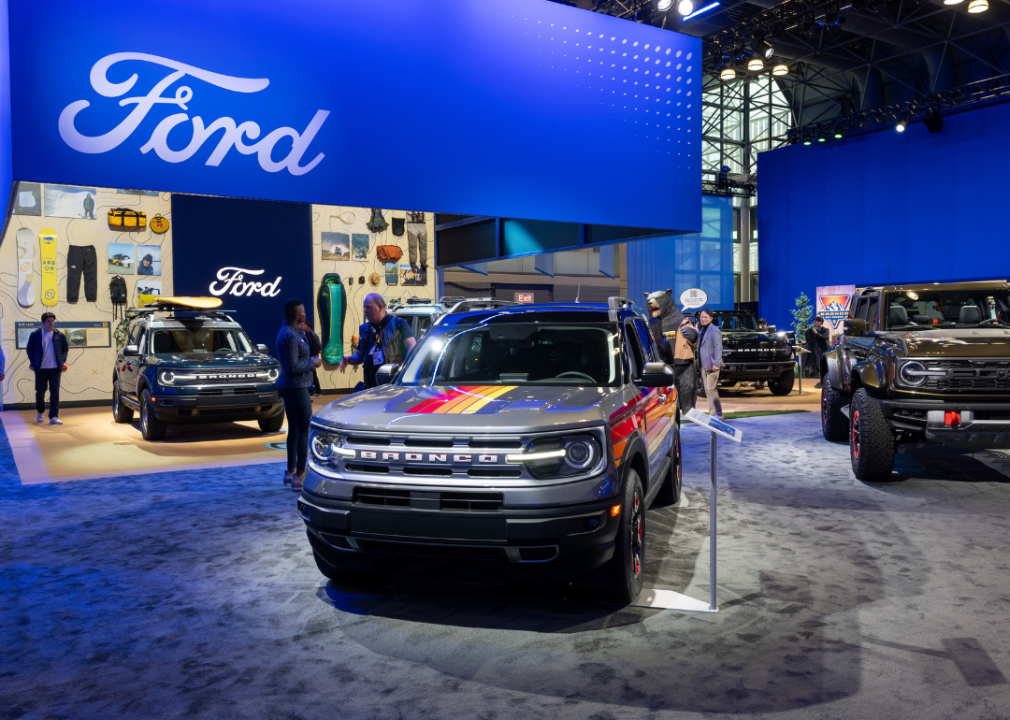
Spencer Platt // Getty Images
#9. Ford
Ford hybrid vehicles in a showroom.
– Production of hybrid vehicles: 6.9%
– Electric vehicles: 7.5%
– Plug-in hybrid vehicles: 0.5%
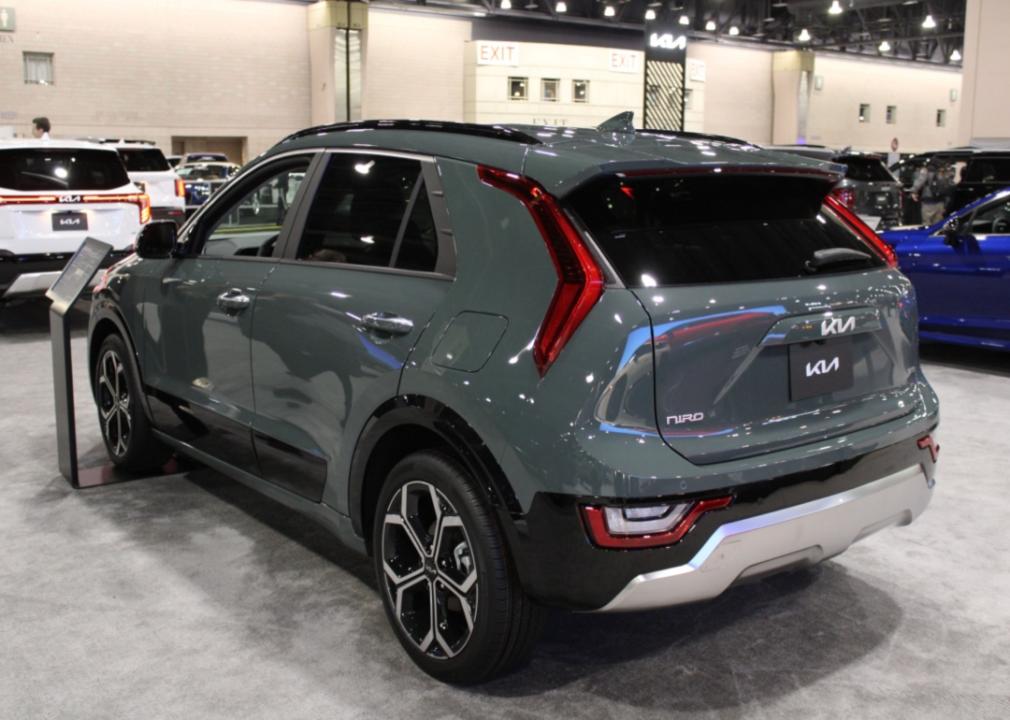
The Global Guy // Shutterstock
#8. Kia
A Kia hybrid.
– Production of hybrid vehicles: 9.2%
– Electric vehicles: 4.5%
– Plug-in hybrid vehicles: 4.0%
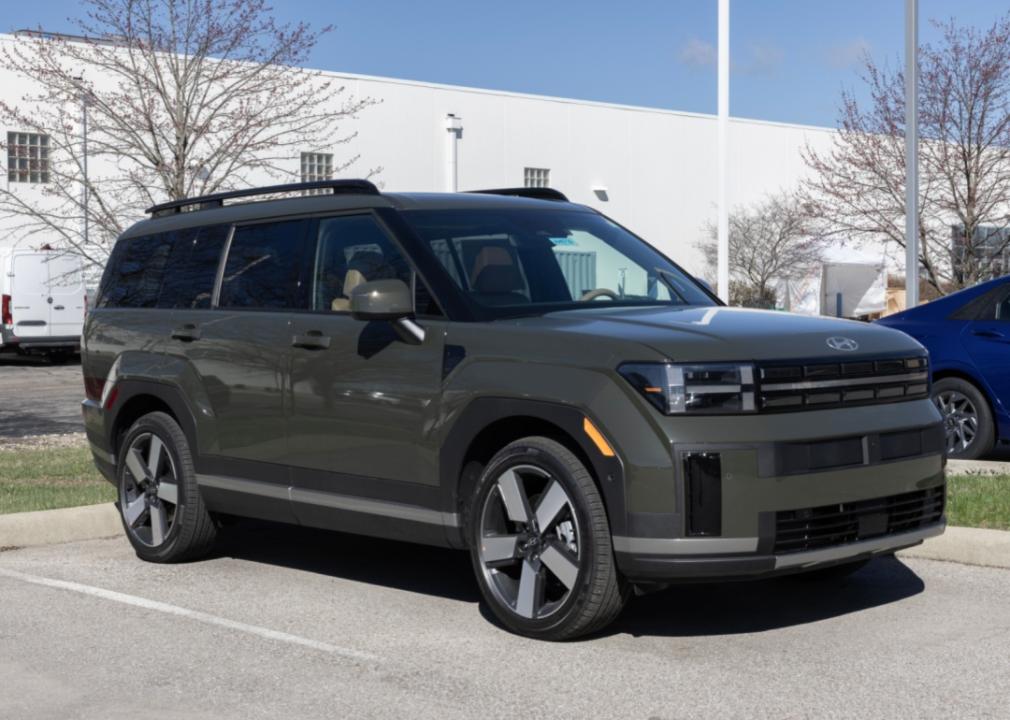
Jonathan Weiss // Shutterstock
#7. Hyundai
A Hyundai hybrid SUV.
– Production of hybrid vehicles: 10.2%
– Electric vehicles: 5.8%
– Plug-in hybrid vehicles: 2.0%
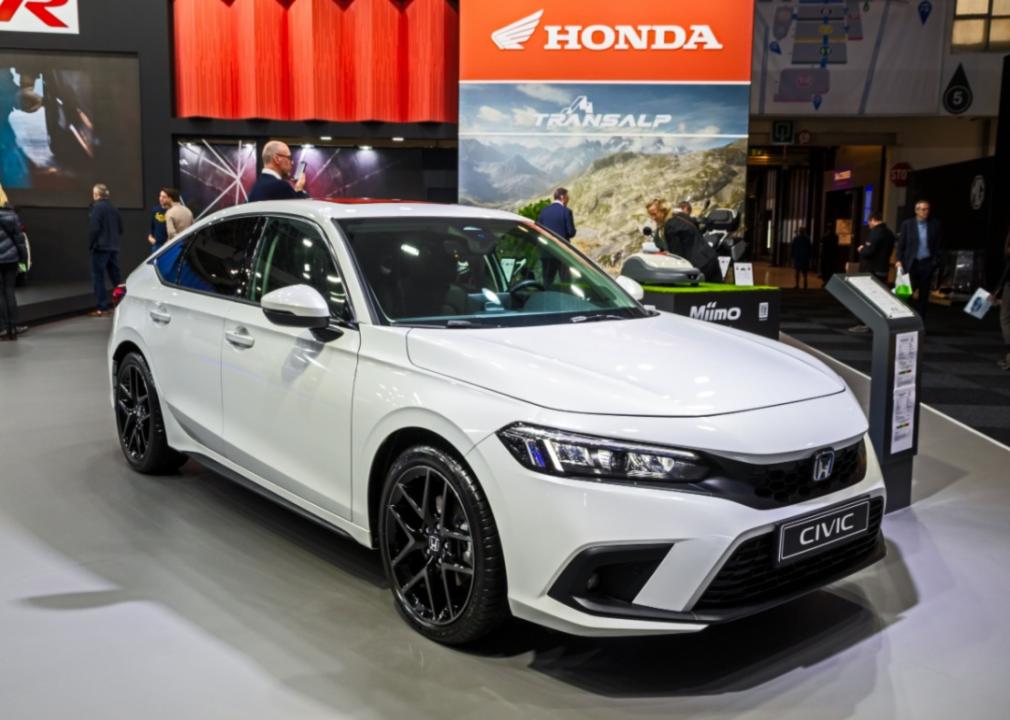
VanderWolf Images // Shutterstock
#6. Honda
A white Honda Civic Hybrid.
– Production of hybrid vehicles: 18.8%
– Electric vehicles: 0%
– Plug-in hybrid vehicles: 0%
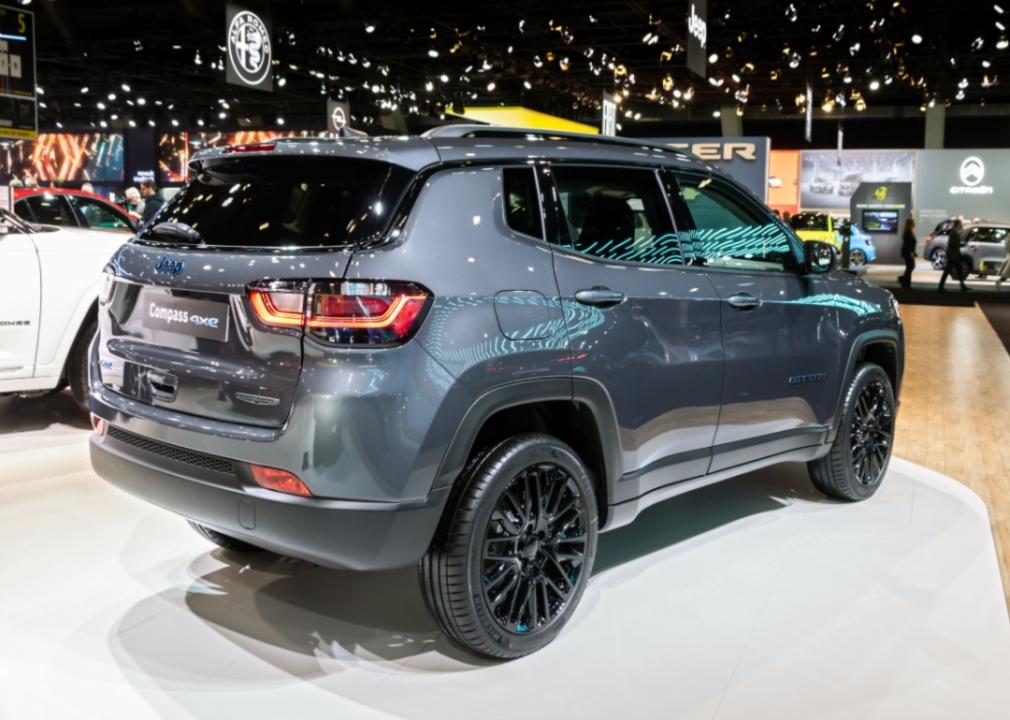
VanderWolf Images // Shutterstock
#5. Stellantis
A grey Jeep Compass Hybrid.
– Production of hybrid vehicles: 20.0%
– Electric vehicles: 0%
– Plug-in hybrid vehicles: 11.1%
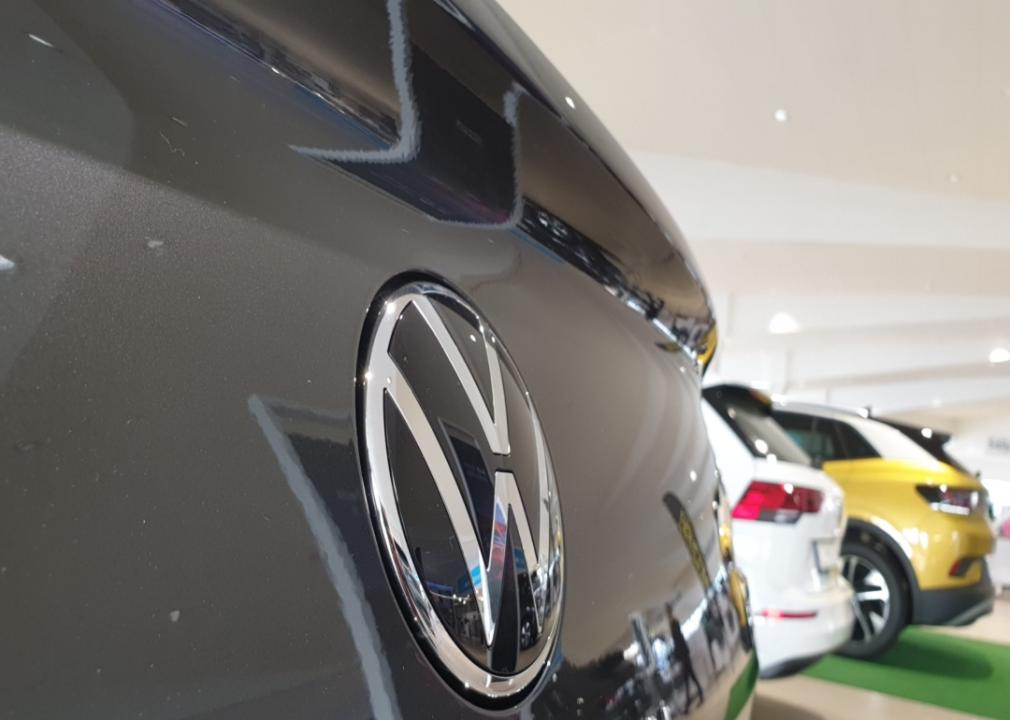
Basel Al seoufi // Shutterstock
#4. Volkswagen
VW Hybrid cars.
– Production of hybrid vehicles: 21.7%
– Electric vehicles: 15.8%
– Plug-in hybrid vehicles: 1.2%
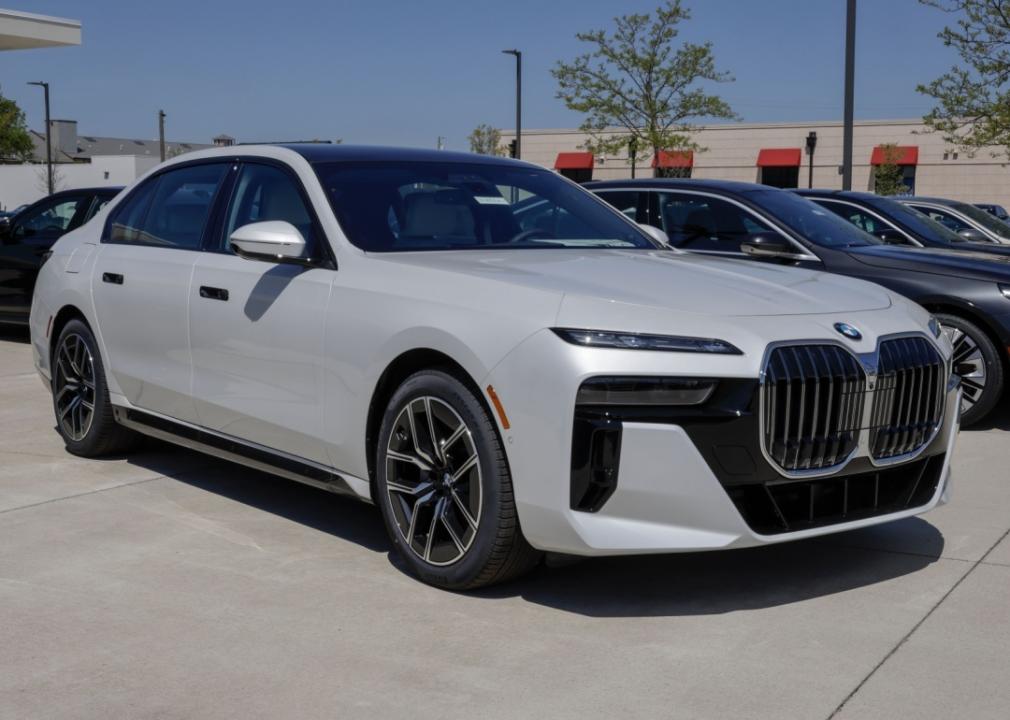
Jonathan Weiss // Shutterstock
#3. BMW
A BMW 7 Series sedan hybrid.
– Production of hybrid vehicles: 23.9%
– Electric vehicles: 11.5%
– Plug-in hybrid vehicles: 3.8%
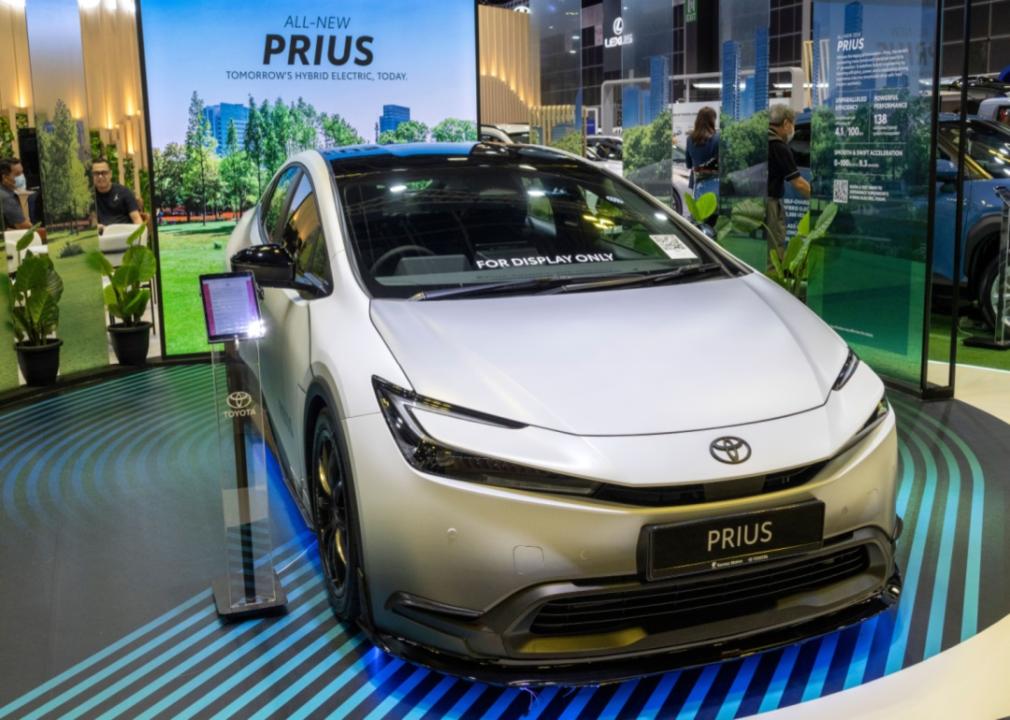
Tang Yan Song // Shutterstock
#2. Toyota
A Toyota Prius.
– Production of hybrid vehicles: 31.8%
– Electric vehicles: 0.6%
– Plug-in hybrid vehicles: 1.7%
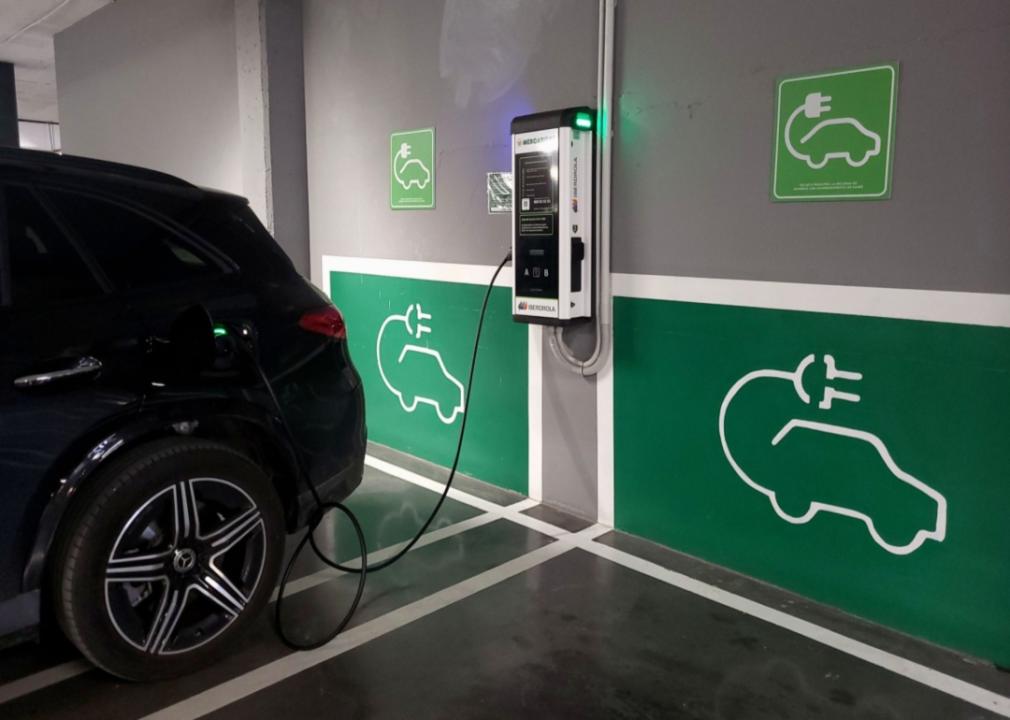
Capturing Images // Shutterstock
#1. Mercedes
A Mercedes SUV plugged into a charging station.
– Production of hybrid vehicles: 43.1%
– Electric vehicles: 19.6%
– Plug-in hybrid vehicles: 0%
Story editing by Alizah Salario. Copy editing by Tim Bruns. Photo selection by Lacy Kerrick.
This story originally appeared on The General and was produced and
distributed in partnership with Stacker Studio.